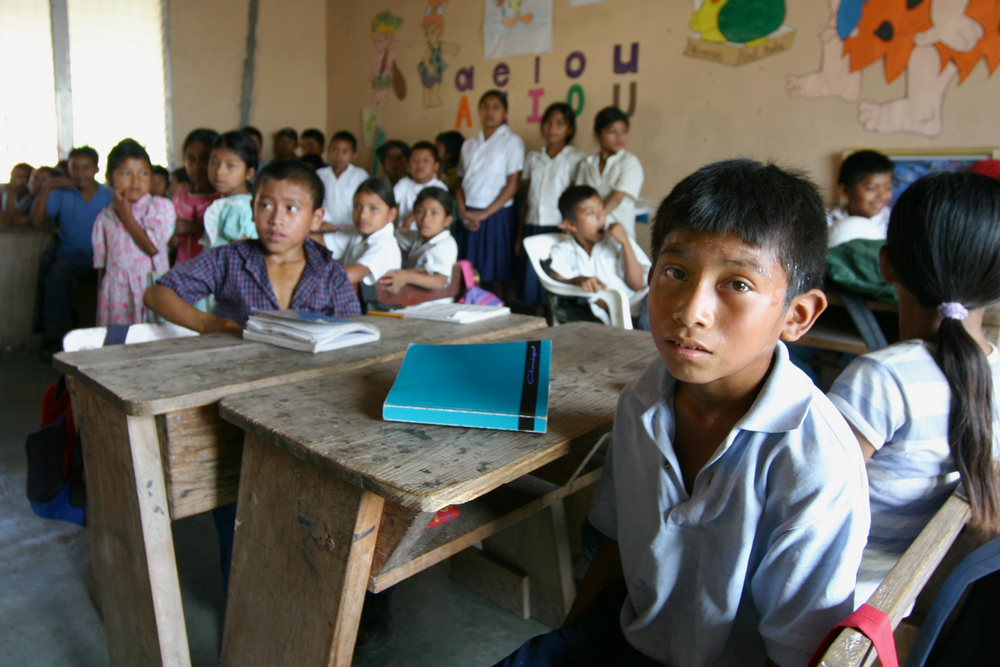

4 Barriers To Quality Education In The Mexico School System
Here’s a shocking fact: when it comes to academics, the poorest children in Vietnam outperform the wealthiest children in Mexico, according to the Programme for International Student Assessment.
Despite Mexico’s recent progress in ensuring that young people finish school — graduation rates of Mexican Students have increased from 33% in 2000 to 45% in 2022 — there is considerably further to go in improving the Mexican school system. According to a Gallup poll, only 56% of Mexicans believe all Mexicans have access to an education, regardless of economic status. Furthermore, those Mexicans who receive an education do not necessarily receive a quality education: the average student in Mexico had the lowest reading literacy and math and science scores among the nations in the Organization for Economic Co-operation and Development (OECD).
Mexicans face many barriers to receiving a quality education. For activists looking to improve Mexicans’ access to educational opportunities, poverty, indigeneity, gender inequality, and shrinking education budgets are pressing problems on which to focus to combat education problems in Mexico.
1. Poverty
Poverty and wealth inequality are huge challenges in Mexico. About 18% of the country lives in extreme poverty, and among poor communities, school dropout rates, absences, and grade repetition are serious problems for Mexican Students. Among OECD countries, Mexico has one of the lowest rates of school enrollment among 15 to 19-year-olds, possibly because poverty drives them to find jobs rather than complete their education.
Poverty doesn’t only affect whether children are likely to attend school or not; it also affects the quality of the education they receive when they do attend school. According to the PISA, leaders in disadvantaged, rural schools and public schools are more concerned about the material resources available than are their peers in advantaged, urban, and private schools. As there is a strong relationship between the shortage of educational materials and student performance, this is concerning.
2. Indigeneity
Indigenous communities are disproportionately poorer than non-indigenous communities, which impacts their access to education. Further, indigenous students face particular barriers related to a history of discrimination and exclusion, including:
- A cultural gap. Education systems aren’t designed with indigenous culture in mind, and few teachers speak indigenous languages. This makes it difficult for indigenous students to experience a learning environment that suits their needs.
- Discrimination. Indigenous children are more likely to experience discrimination at school.
- Less relevant education. The skills taught in school are often irrelevant to indigenous economies and ways of life.
3. Gender Inequality
While Mexico’s gender gap in education has fallen significantly in the last 30 years, Mexican girls are more likely than boys to drop out of school by the age of 12. Domestic chores may keep girls from attending school, and as they age, women are less likely to graduate high school and less likely to attend college than men.
Latin America is the only region in the world where child marriage is on the increase, and 83% of married Mexican girls leave school. As girls are more likely to go to school if they have educated mothers, this is a worrying trend that may continue a cycle of gender inequality in education.
4. Shrinking Education Budgets
In 2014, the OECD noted that Mexico’s annual expenditure on spending per student was already well below the OECD average. Three years later, economic pressures have caused the Mexican government to cut their education budget by more than 11%. Mexico’s textbook budget has been cut by a third, and teacher training programs have been reduced by 40%. This will only worsen an existing problem.
These are serious challenges facing Mexico’s education system. The International Community Foundation works with many excellent organizations in the country to alleviate poverty, reach indigenous communities, and eliminate gender inequality. Please help us support these organizations by donating on our website.
Join Our Mailing List
Stay Connected with ICF
Be the first to get exclusive updates on
what ICF is doing to make a difference!
Fields marked with an * are required
